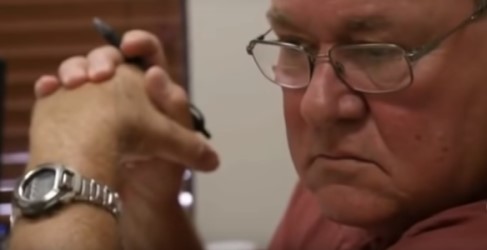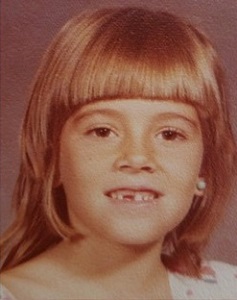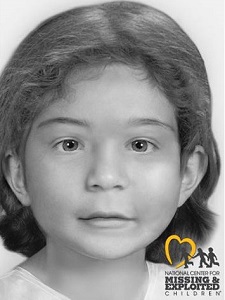Some murder cases are solved right away. Others remain a mystery for decades, haunting the police officers who were not able to clear them. So every few years, officers review the cold cases, trying to find new leads. And sometimes they succeed. And they catch the killers just when the offender was feeling home free.
That is what happened with these four cold case murders that the U.S. police solved in 2019.
4. Bear Brook Murders

A hunter was moving through a dense forest in New Hampshire (U.S.) on November 10, 1985. Then, he saw something out of place. He spotted a big and suspicious metal barrel in the middle of nature. So he called the police.
The police showed up at the park in question, which is Bear Brook State Park in Allenstown.
They opened the suspicious barrel. And to everyone’s dismay, they found the remains of a young woman and a child inside.
An investigation followed, but there were zero clues in the crime scene. So the identity of the victims and the perpetrator remained a mystery for years.
Then, fourteen years later, in May 2000, another metal barrel was found in the same forest, not far from the first. This time, the police found the remains of two children inside.
The four victims, found in the two barrels, were killed in the same way. They were hit with a blunt object. And then they were dismembered.
There was a serial killer on the loose, and there were still no clues to find him/her.
DNA leads to the killer
The police tried to figure out the cold case for nearly thirty years.
The murders had happened in pre-DNA testing days, so in 2014 they tested the DNA from the scene. The police discovered that three of the victims were related. The twenty-something-year-old woman was either the mother, aunt, or sister of two of the girls.
They still did not know anything about the third child.
Three years later, in 2017, another DNA test pointed to the serial killer. It was probably Robert Evans. And Evans turned out to be the father of the third child.
Evans had been in and out of jail in the ’80s and ’90s. Yet the police realized that “Evans” was an alias. To find him, they needed his real name.
Fortunately, they did have his picture. So they showed it in a video and asked the public to help identify him. One of “Evan’s” sons came forward. He said the real name of the suspect was Terry Rasmussen.
Despite all the efforts, the police were 7 years too late. Rasmussen had died in jail in 2010, aged 62.
He was arrested in 2002 for killing his girlfriend, chemist Eunsoon Jun. He killed her with a blunt object. Then he dismembered her and buried the remains in her own basement, in California.
The same modus operandi of the Bear Brook Murders killer.
The police now had the Bear Brook killer. But who were his four victims?
Naming the victims
Rebekah Heath was a 33-year-old librarian from Connecticut. In the late 2000s, she became obsessed with the Bear Brook Murders. She felt the victims deserved to be identified.
So Rebekah spent her free time navigating missing persons and genealogy sites. She looked for missing females who fit the description of the Bear Brook victims.
Every time she found a match, Rebekah investigated to see if they had already reappeared. If she could not find their current whereabouts, she contacted their family members. She wanted to learn more about those missing persons.
In 2017 she came across a post written on a genealogy site almost 20 years before, in 1999. Someone had been looking for their half-sister, Sarah McWaters. They were also looking for Sarah’s mother, Marlyse Honeychurch.
Rebekah investigated and realized Marlyse and her two daughters disappeared in the ’70s. The ages of the trio matched the ages of the victims. Yet, for one reason or another, Rebekah abandoned that lead.
A year later, while Rebekah was listening to a podcast on the Bear Brook murders, Marlyse came to mind.
So now, the librarian followed the lead. She contacted Sarah McWater’s half-sibling, the one who had posted on the genealogy site in 1999. And she found out Marlyse was last seen in 1978 at her mother’s house in California, during Thanksgiving. Marlyse had attended the celebration with her two daughters and her new boyfriend. The boyfriend’s name was Rasmussen.
Rebekah called the police.
The police confirmed Rebekah’s suspicions, through DNA samples, in 2019. The adult victim was 24-year-old Marlyse. Her daughters, Sarah Lynn McWaters (a 1-year-old) and Marie Elizabeth Vaughn (6), were two of the other victims.
The identity of the third child, Rasmussen’s daughter, remains unknown, as well as the fate of her mother.
Rebekah Heath, the inspired detective/librarian, was majoring in Communications. But now she is thinking about changing her major to Criminal Justice Research.
3. Barry Crane’s murder
On July 5, 1985, Barry Crane’s housekeeper walked into his home in Los Angeles like any other day. But inside the house, she found a trail of blood. It led to Barry’s bedroom. Once in the empty bedroom, the housekeeper saw, with horror, more blood. The floor and a statue were covered with it. And the bedsheets were missing.
She kept searching the house and finally found Barry’s dead body in the garage, wrapped in the bedsheets.
According to the forensic examiner, Barry had been strangled with a telephone cord. And then, beaten to death with the statue.
But for all the violence, the only things missing from his home were his wallet and his Cadillac.
The police found the car hours later, abandoned on a mountain road. It had traces of blood, fingerprints, and a collection of cigarette butts in the ashtrays.
The police collected the evidence, but it led nowhere for 30 years.
Who was the victim?
Barry Crane was a well-known producer and director of television shows. He worked in Los Angeles. Barry directed popular series such as The Incredible Hulk, Wonder Woman, and Dallas.
He was also successful in another field: bridge. Many thought that the 57-year-old was the best bridge player in the world. He is still a legend in the bridge world.
No one could imagine why he had been killed.
A detective does not give up and finds the culprit
The unsolved cold case bothered a detective from the Los Angeles Police Department. So he had the evidence retested in 2006, but to no avail.
He tried again twelve years later, in 2018. This time a fingerprint specialist was able to identify one of the prints. It belonged to a 51-year-old man named Edwin Hiatt.
Hiatt had a police record. In 1985 -the same year of Barry’s murder- the then-18-year-old Hiatt stole a car in Utah. And in 1997, he was arrested for beating his then-wife. He had tried to strangle her and had threatened to burn the house down.
The police tracked Hiatt down through Facebook and Verizon, the telephone company. He was living in North Carolina.
The police asked the FBI to keep him under surveillance.
One day, Hiatt drank a cup of coffee and smoked cigarettes in a public place. After he left, the FBI collected the disposable cup and the cigarette butts. They had them tested.
The results came back in January 2019: Hiatt’s DNA matched the DNA of five of the cigarette butts found in Barry’s car.
Then, police detectives went to North Carolina to interview Hiatt. He confessed to Barry’s murder. In the 80’s he was heavily into drugs, and he remembers only bits of what happened.
Everyone in Hiatt’s community was shocked by his arrest. Apparently, he is a changed man. He worked at a repair shop, and people knew him as a kind and generous person.
In May 2019, 34 years after the crime, he was formally charged with the murder of Barry Crane. The suspect is facing life in prison.
2. Johnnie Allbritton’s cold case

In plain daylight, burglars broke into Johnnie Allbritton’s house in Buffalo, Texas. It was May 14, 1984.
Johnnie appears to have been in his backyard. Then he, unknowingly, walked into his house through the backdoor. The burglars shot him five times: two in the front and three in the back. And then they fled, leaving the murdered 65-year-old lying next to a pile of guns they had meant to steal.
They did take with them a bag with $6,000.
Norma, Johnnie’s wife of 18 years, returned to the house at 4 pm with their son and called the police.
At least that is what the Sheriff’s Office thought of the crime at the time. But they never found the burglars.
Reviewing the evidence with the aid of a TV show
In 2015, Sheriff Kevin Ellis decided to take another look at the case. It had been more than 30 years since the murder.
Since he did not have enough resources, he collected the evidence and sent it to the TV show Cold Justice. The show provides the resources for cold case investigations. In exchange, they film the whole process and air it on TV.
The producers of the show found the case interesting. So they sent a team of experts to Texas to work with the Sheriff’s Office. Leading the group was Johnny Bonds, a retired homicide detective.
The combined team -local police and show experts- went over the case once more. They interviewed more than 50 witnesses and tested the evidence in the show’s forensic labs.
They unveiled enough evidence for the Sheriff’s Office to make an arrest. They went after Norma, Johnnie’s second wife, the one that called the police the day he died.
Yet the exact nature of the evidence has not been disclosed. The police have not made it public, and the show will air in 2020.
In July 2019, Norma, now 84 years old, was charged with murder.
And the sheriff is re-investigating the death of the couple’s daughter, Pam.
Three years before Johnnie’s murder, his 13-year-old daughter Pam died. She received a shotgun wound in that same house. At the time, in 1981, it was ruled a suicide.
Norma has been charged with her husband’s death. But since there has not been a trial yet, it remains to be seen if she is guilty or innocent.
1. Miranda Fenner’s cold case

The small community of Laurel, Montana, had not seen much violence before 1998. But in September of that year, a woman was raped, stabbed, and her throat was slit.
Then, two months later, someone killed 18-year-old Miranda Fenner.
That day, Miranda was working at the local movie store. Someone came into the store and stabbed her several times. Then they slit her throat. The girl managed to crawl outside the shop, where a passerby found her. But she died in the hospital that night.
For two decades, the police interviewed hundreds of witnesses. They followed many leads, including several false confessions. But to no avail. Miranda’s murder remained a cold case for almost 20 years.
Remorse and confession
Then, in 2016, the Yellow County police received another confession. A petty criminal of local extraction was confessing to two murders: Miranda’s, and the one of the raped woman.
The police had dealt with many false confessions before. And this man’s story did not add up. He said he had killed the rape victim, but she was alive. And the details he gave of Miranda’s murder were of common knowledge.
Furthermore, petty criminal Zachary O’Neill was confessing from the psychiatric ward of a hospital in Washington. The police dismissed it.
But a few months later, in March 2017, an intoxicated Zachary showed up at the Yellowstone County Jail. Again he confessed to the crimes. This time he gave more details.
The police took his DNA and let him go. They had to check his story because in Montana a confession is not enough for an arrest.
Conviction
Yet, it was true. Zachary’s DNA matched the evidence in the case of the raped woman. After slitting her throat, he had left her for dead. That is why he was confessing to her murder; he did not know the woman had survived.
And Zachary was in Miranda’s video store the day she was killed. Twice. The second time, according to members of his family, he was there just minutes before she was attacked. The police had questioned 18-year-old Zachary back then.
According to Zachary’s account, in those days, he used to steal to feed his drug habit. On the day of the murder, he was high on meth. He went to the store the first time to rent movies, and the second time to rob it at gunpoint. But after the robbery, he feared Miranda would recognize him, so he stabbed her.
For years he did not care about the murder, but eventually, his conscience caught up with him. His own brother was killed in 2013, and it had been a relief when his killers were caught. So he wanted Miranda’s family to have the same closure.
Zachary was tried in August 2019 for both Miranda’s murder and the rape/attempted murder of the other woman. He pleaded guilty and will serve two life sentences.
More Articles













